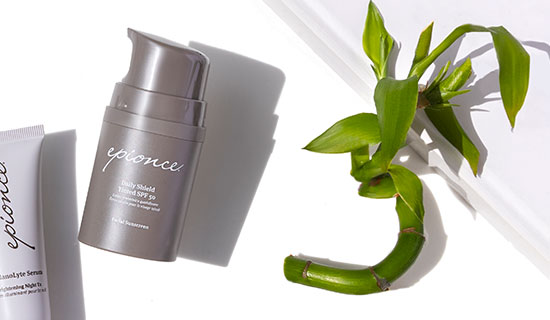Self Care with Sunscreen
Guest Contributor: Sarah Ban
April 30, 2021
Sunscreen, Hands Down, Is Your First Defense Against Visible Aging and Skin Cancer
Though cleansers, serums, and moisturizers are beauty cabinet essentials that help maintain a healthy, revitalized, and luminous complexion, nothing can match the unique functions and benefits of an effective sunscreen. Not only does it help minimize the risk of skin cancer, it also plays a major—arguably, the most important—role in helping to slow down the visible signs of skin aging. To make the most of sunscreen, the key is to choose the right product, use it correctly, and maintain a healthy skin barrier. Here’s how.
What to Look for in a Sunscreen
Don’t settle for anything less than the following:
- Broad-spectrum protection: this means the sunscreen protects your skin from both UVA and UVB rays. While UVB rays are mostly what cause sunburn and skin cancer, UVA rays, which penetrate the skin more deeply, are primarily responsible for photoaging (e.g. the appearance of wrinkles, sagging, and uneven texture).
- Sun protection factor (SPF) 50 or higher: This number indicates how long it would take the UV rays to burn your skin (assuming you’re using the sunscreen properly) relative to the time it would take to burn without any sunscreen at all. In other words, it would take 50 times longer to burn your skin with an SPF 50 sunscreen on compared to not have any protection.
- Water-resistant. Even if you’re not swimming, a water-resistant sunscreen will be less likely to rub off in the face of humidity and other factors.
How to Use Sunscreen Correctly
- Apply sunscreen every day, rain or shine or anything in between. It doesn’t matter if you’re at the beach, snowboarding, driving with the windows up, in an airplane, or working indoors all day—your skin is being exposed to those UV rays.
- Make sunscreen the final step of your skincare regimen. Sunscreen needs time to bind to the outer layer of the skin for maximum benefit and protection.
- Apply to cool, dry skin in the morning 15-30 minutes before leaving the house, or before going outdoors for an extended length of time.
- Make sure to reapply, especially if you’re outdoors for an extended period of time. If you can, reapply every two hours (more if you can). Set a timer!
- Use the right amount. For the face and all exposed areas of the body, that’s one full ounce (about the size of a shot glass—yes, you read that right!).
- Don’t forget the neglected areas. This includes behind the ears, the neck, chest, hands, and lips.
Maintain a Healthy Skin Barrier
Even if you’re using the best sunscreen available, you have to meet it halfway! You can do this by making sure your skin barrier is strong and resilient. The effectiveness of a sunscreen depends largely on how well it can bind to the skin, and the healthier your skin barrier, the more surface area there is. Try using a Renewal Facial product best suited to your skin type, then follow with Epionce Daily Shield Tinted SPF 50. Both have the Skin Cancer Foundation Seal of Recommendation as effective broad-spectrum sunscreens.


